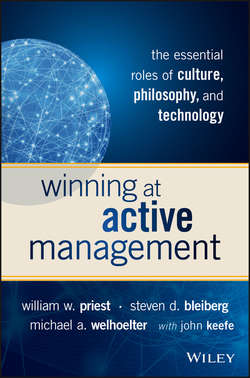Читать книгу Winning at Active Management - Welhoelter Michael A. - Страница 10
На сайте Литреса книга снята с продажи.
PART I
Culture
Chapter 1
Culture at the Core
Justice and Fairness
Оглавление“Fairness seems to have three main features: equality, agreement, and transparency,” wrote Paul Woodruff, professor of philosophy at the University of Texas at Austin.28 With respect to compensation, he adds, “transparency allows anyone to predict accurately what results to expect.” Woodruff goes on to caution leaders, however, that “fairness is a trap, because once you commit yourself to it, you must submit to it. You are no longer in control because you have waived the right to exercise good judgment,” and any deviations from established rules would appear unfair.
Justice in a corporate culture is a subtly different concept, Woodruff says, calling for judgment and leadership rather than formulas. Having a discretionary component in compensation combines fairness and justice, giving a firm’s leaders leeway, and the ability to reward both individual achievement and teamwork, and thus reinforce the culture.
Justice has the greater challenge. It goes to the heart of preserving “the community,” and the attributes valued by the community – frequently at times when the application of rules based in fairness might have the opposite and negative effect.
For a professional firm to be viable for the long term, however, the shared interest of the partners has to transcend the financial rewards, and include the intangible achievement of helping to build a quality organization. This calls for assembling a group of partners with complementary values and temperaments who will be able to work together, to understand each other, and to put up with each other during hard times over many years.
28
Paul Woodruff, The Ajax Dilemma: Justice Fairness and Rewards (Oxford, England: Oxford University Press, 2011), 120.
